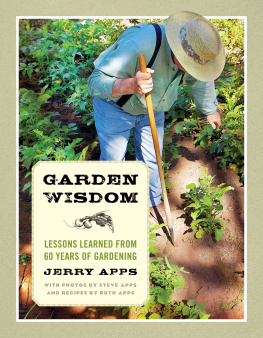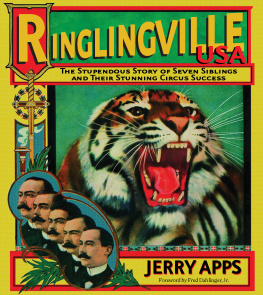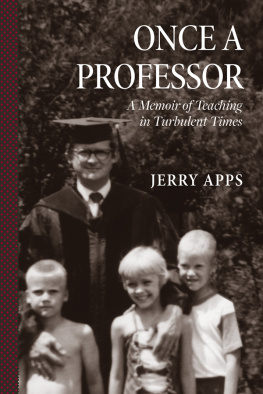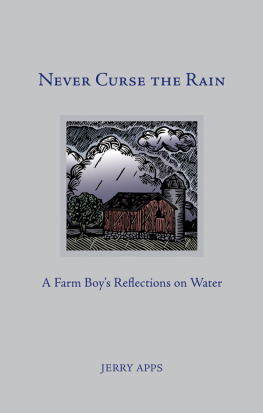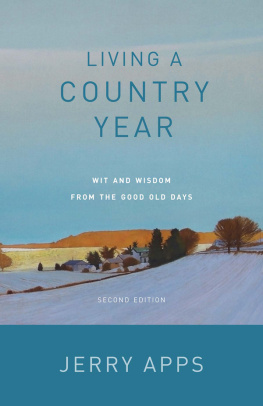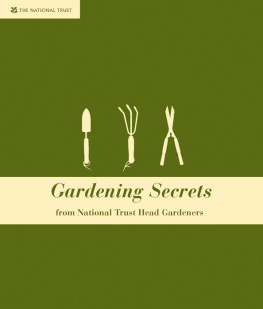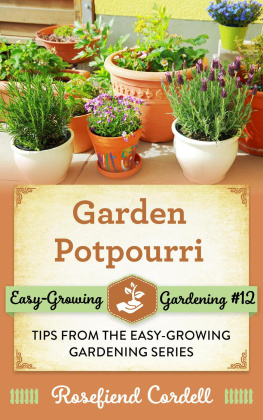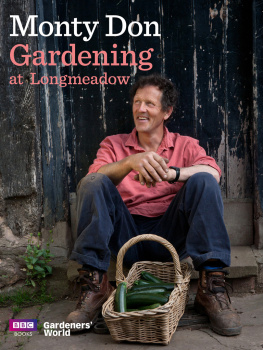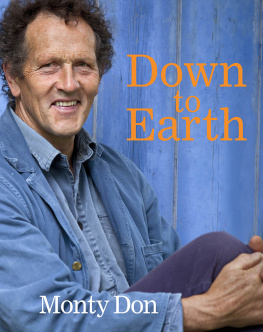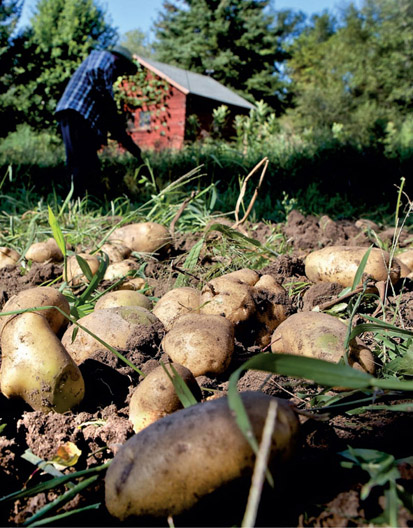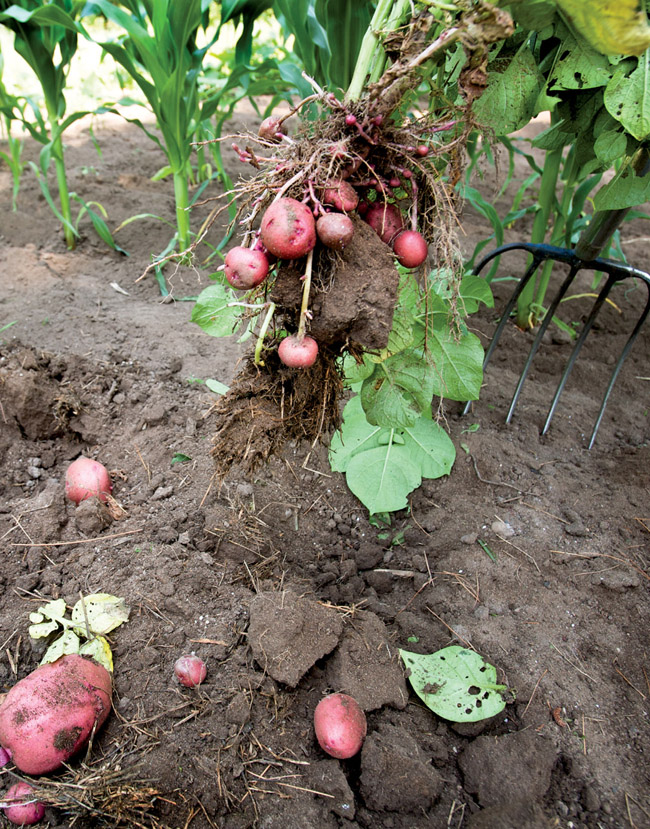Published by the Wisconsin Historical Society Press
Publishers since 1855
Text 2011, 2012 by Jerold W. Apps
Photographs 2011, 2012 by Steve Apps unless otherwise credited
E-book edition 2012
For permission to reuse material from Garden Wisdom (ISBN 978-0-87020-494-4; e-book ISBN 978-0-87020-598-9), please access www.copyright.com or contact the Copyright Clearance Center, Inc. (CCC), 222 Rosewood Drive, Danvers, MA 01923, 978-750-8400. CCC is a not-for-profit organization that provides licenses and registration for a variety of users.
wisconsin history .org
Photographs identified with WHi or WHS are from the Societys collections; address requests to reproduce these photos to the Visual Materials Archivist at the Wisconsin Historical Society, 816 State Street, Madison, WI 53706.
Designed by Percolator
15 14 13 12 11 1 2 3 4 5
The Library of Congress has cataloged the printed edition as follows:
Apps, Jerold W., 1934
Garden wisdom / Jerry Apps ; with photographs by Steve Apps and recipes by Ruth Apps.
p. cm.
Includes bibliographical references and index.
ISBN 978-0-87020-494-4 (alk. paper)
1. Vegetable gardeningAnecdotes. 2. Cooking (Vegetables) I. Apps, Steve. II. Apps, Ruth. III. Title.
SB321.A66 2012
635dc23
2011020809
To all those who are once more discovering
the joys of vegetable gardening
Contents
Acknowledgments
This book, like so many I have written, involved the entire family. Not only do my son Steve and his partner, Natasha, help with gardening at the farm, but most of the photos in the book are Steves, and Natasha provided some of the recipes. Natasha has also proven that a garden as small as a flowerpot can produce tasty lettuce. My daughter, Sue, her husband, Paul, and our grandsons Josh and Ben have long helped us with the garden, from planting to putting up our deer fence and much more. Sues careful reading of the manuscript was also most helpful. In Colorado, son Jeff, his wife, Sandy, and our grandkids Christian, Nicholas, and Elizabeth allowed me to experiment with a small kitchen garden at their home in the mountainswith the entire family involved every step of the way. My wife, Ruth, longtime gardening partner and a professional home economist, developed most of the recipes for the book and tested each one, sometimes several times.
Kate Thompson, senior editor at the Wisconsin Historical Society Press, who has edited several of my books, continues to ferret out errors both small and large. She is largely responsible for making my books not only accurate but also readable. Much thanks.
Introduction
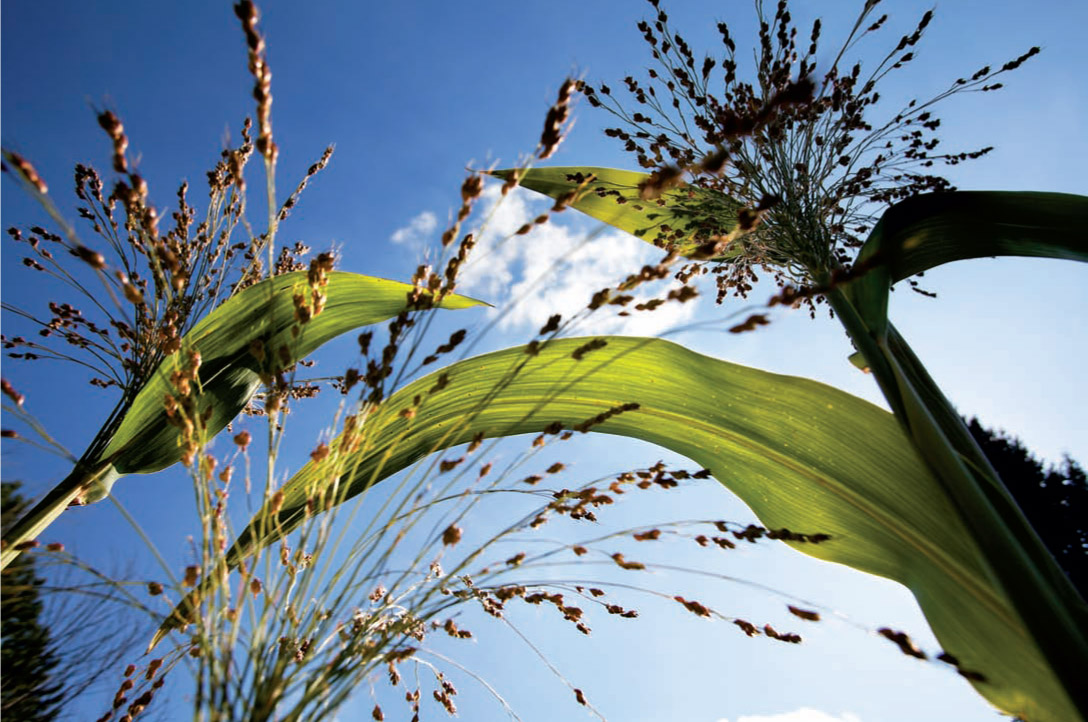
Like my father before me, I plant something new every year just for fun, like this broomcorn.
I have planted a garden nearly every year since I was a kid growing up on a farm in Waushara County, Wisconsin. (Im not much of a flower gardenervegetables are my thing.) About the only years I didnt garden was when I was in college and in the army. Otherwise, every year I dig up a piece of ground and plant some seeds.
In my sixty years or so of gardening, Ive learned a thing or two, and on the following pages I offer practical ideas for growing a garden. Ruth provides some of her best recipes for garden produce, including tips for preserving what you harvest. And our son Steve shares photos hes taken in the garden, when he wasnt hoeing.
This book is also about my gardening memories, from the time when I was a youngster to the present. Along the way I share the connections I see between nature and gardening. Gardeners are nature lovers, whether they realize it or not. At an even deeper level, gardeners are a part of naturesometimes at odds but always cooperating, often surprised, and almost always pleased by the connection to the earth.
Out in my garden I enjoy birdsong; the surprise of a pair of sandhill cranes flying over the treetops, so low I can hear the swish, swish of their wings; the occasional hawk soaring high above me, riding the thermals on a warm summer day. A bluebird carrying a meal to its new brood in a birdhouse I put up at the edge of the garden. A bank of dark clouds building in the west, with the promise of much-needed rain. The gentle sound of needles rustling as a slight breeze flows over the row of white pines I planted on the east side of my garden to shield it from the country road. The smell of freshly turned soil as I weed and hoea pungent, powerful smell full of history and promise, mystery and mystique.
Ive discovered that every year that I garden I learn something new; indeed, that is one of the many reasons I keep at it. I doubt I will ever be completely confident about my gardening skills, but I do know enough to put fresh vegetables on the tablemost years, anyway.
PART ONE
GARDENING ROOTS
CHAPTER 1
Why I Garden
Why do I grow vegetables, when I have easy access to farmers markets for fresh produce, have a well-stocked grocery store within a mile of my house, and could be spending my time doing many other things?
Gardening keeps me in touch with my history. Having a big garden gives me a reason to climb on my John Deere tractor, hook up the plow, and turn the soil as I have done year after year since I was a young fellow growing up on a farm. I enjoy seeing the transformation of land from ribbons of brown, freshly turned soil to green things growing. I like pulling the rusty old disc that sits under a box elder tree most of the year, or the spike-tooth smoothing drag that turns a roughly plowed garden spot into a neat space ready for row marking and planting.
Of course, I also have practical reasons for gardening. Although I probably didnt believe my mother when she said vegetables and fruits were good for me, she was right, of course; the vegetables and fruits I grow offer a bevy of vitamins, minerals, fiber, and trace elements for a minimum amount of calories. Many of them, including broccoli, spinach, tomatoes, and carrots, boast built-in disease preventers along with their nutritional benefits.
In recent years scientists have come a long way in isolating the vitamins, minerals, and other nutrients in the food we eat, and vitamin pills and other supplements crowd the shelves of our grocery, pharmacy, and big-box stores. But it is a mistake to think that popping a few vitamin pills and eating manufactured foods can take the place of eating the real thing. As noted food writer and activist Michael Pollan urges us in his In Defense of Food: Eat food. Not too much. Mostly plants.
All that being said, I do believe that eating ought to be a pleasurable experience. The oft-heard modern idea that food is fuel for our bodies misses this point entirely. Most of us eat not just to stay alive but because it is enjoyable. In our busy lives, mealtime often is our time to be with friends and family, providing us a chance to swap stories and experiences. Eating together is an important part of what it means to be human.

